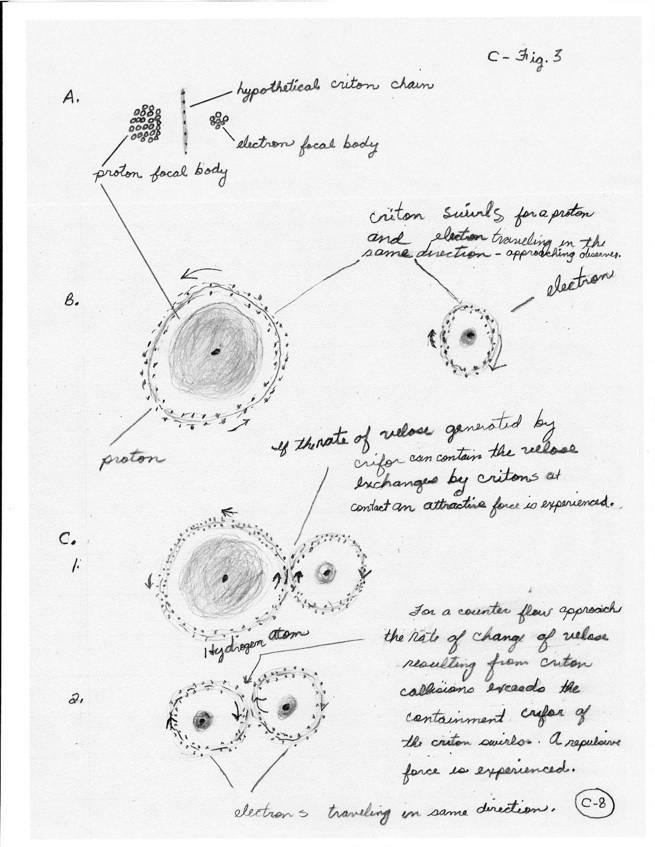

C- Fig. 3. The Dynamics of the criton swirl in the formation of the hydrogen atom.
A. The strongest expression of the crifor association per unit of matter is the criton to criton bond at contact. An idealized criton chain would be created if critons were arranged in a linear fashion at close proximity with low relative motion to each other. The apparent attractive force between two particles would be increased by a chain of critons passing between them. Here, the particles are represented as potential focal bodies of the electron and proton. An enhanced array of force effects should be possible if the chain were fashioned into a ring structure surrounding the focal bodies. The macron as described in Fig. 1 is composed of a focal body (particles possessing a substructure) with an spinning criton swirl. Since swirls are strongly bound to their respective focal bodies, when two such macrons approach each other, they may interact via their criton swirls.
B. The criton swirl represents a “jet stream” or “ring” of crossons rotating at c associated within the electron and proton. The directions of rotations relative to the translational motion when charges are approaching the observer are designated to be clockwise for the electron and counter clockwise for the proton.
C. Each criton possesses a velose vector and is a point for the mediation of crifor effects. The force created by crifor between critons is always attractive. At contact the exchange of velose creates a repulsive situation relative to the EP for the critons making contact. See The Interactions Of The Ultimate Components in U. components.
1. An approach between an electron and a proton where criton swirls come together such that at the approach area velose vectors of critons are in the same general direction. Under the appropriate internal and translational velose conditions the association creates a net attractive force. This is the electrostatic bond and in this case a hydrogen atom is formed.
2. An approach between two electrons with “random” translational motion that by chance approach each other such that their translational motion is in the same direction. This tends to create a repulsive situation since the critons of the different swirls have velose vectors in the opposite direction.
[The models presented suggest that the electron to electron (positron) and proton to proton (anti-proton) bonds should be possible when their relative translation motion is very low and in opposite directions. (This is addressed later.)]
